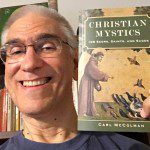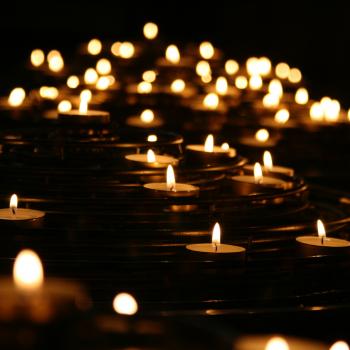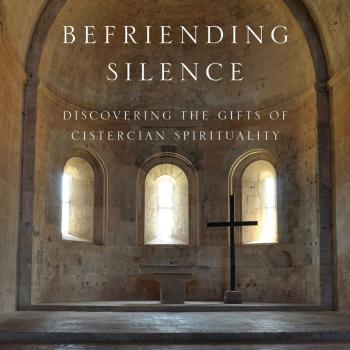
If you were stranded on a desert island, what music would you want to accompany you?
The BBC has a long-running program called Desert Island Discs which began airing in 1942 and as of 2015 it’s still going strong. Here’s the concept:
Desert Island Discs … was introduced to the listening public as “a programme in which a well-known person is asked the question, if you were to be cast away alone on a desert island, which eight gramophone records would you choose to have with you, assuming of course, that you had a gramophone and an inexhaustible supply of needles.” (Source: BBC website)
How times have changed. Nowadays we’d be more worried about the inexhaustible supply of batteries to keep our MP3 players going. And, for that matter, with GPS and satellite imagery, would any of us really think we would be stranded more than a few weeks at most?
Nevertheless, I think it’s an interesting thought experiment: if for whatever reason you needed to pare down your music library to the few most essential titles, what would they be?
Here are my selections. Following the BBC’s admittedly rather arbitrary number, I’m allowing myself eight recordings — and, just for fun, I’m also listing my eight essential DVDs. What would yours be?
My Desert Island Discs
-
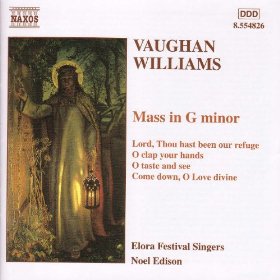
Vaughan Williams, Mass in G Minor Elora Festival Singers directed by Noel Edison, Mass in G Minor and Other Sacred Choral Works by Ralph Vauhan Williams — If I had one piece of music to accompany me into exile, without doubt I would choose Vaughan Williams’ Mass in G Minor, informed as it is by both the English folk song tradition but also the polyphonic sacred choral tradition, it’s a sublime statement of western music and, while set to the Latin mass, expresses the heart of prayer: thanksgiving, supplication, adoration, and heartfelt faith. I listen to this almost every day after thirty years I show no signs of getting bored with it. Did I mention that it is sublime? Absolutely.
- Various Artists, Orchestral Works by Ralph Vaughan Williams — When the BBC polled its listeners a few years back to find out what they wanted on their desert islands, both Vaughan Williams’ “The Lark Ascending” and “Fantasia on a Theme by Thomas Tallis” made the top ten. I must be like the typical BBC listener, since I consider both those tracks essential listening. “The Lark Ascending,” inspired by a poem of the same name by George Meredith, is perhaps the purest work of musical contemplation I know of (outside the polyphonic tradition), and the Tallis Fantasia combines a simple melody from a Renaissance psalter with the full splendor of Vaughan William’s musical palette. The result is a composition overflowing with beauty and longing. This anthology includes lovely performances of both these masterpieces, along with favorites like “Fantasia on Greensleeves,” “English Folk Song Suite,” and other lovely music.
- Stile Antico, Music for Compline: Tallis, Byrd, Sheppard — Okay, my collection won’t be all Vaughan Williams — although it will be dominated by sacred or prayerful music. For example, this lovely collection of music written for the night office, or compline, performed with heartfelt precision by one of Britain’s leading early music ensembles. Stile Antico is renowned for being the “ensemble without a conductor” but what I particularly love about their musicianship is the warmth and intimacy that I hear in their recordings; as a listener, I’m left with the impression that they clearly understand this music is prayer, first and foremost. Naturally, Music for Compline is perfect for the end of the day, but it’s so luminous that I often “cheat” and listen to it in the morning.
-
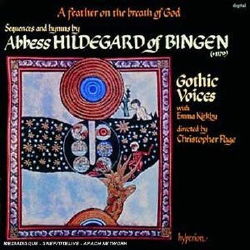
A Feather on the Breath of God Gothic Voices with Emma Kirkby, directed by Christopher Page, A Feather on the Breath of God: Sequences and Hymns by Abbess Hildegard of Bingen — I still remember when I first discovered this album; I was a graduate student and used to enjoy spending my Saturday afternoons exploring a wonderful book/CD store in Georgetown. One day as I was looking at the Christian theology books, I heard what sounded like the voice of an angel: inquiring at the desk I discovered it was soprano Emma Kirkby singing “Columba Aspexit,” the lead track from this glorious album. I would have bought the album (this was before CDs!) even if the composer had been Mickey Mouse, but upon learning that that music was by the medieval mystic Hildegard of Bingen, I felt like I had just won the lottery. Of course, A Feather on the Breath of God went on to wind Gramophone Album of the Year in 1982, and spawned countless other Hildegard of Bingen recordings — but I’ve never hear another one that comes to close to this album for sheer sonic beauty.
- The Benedictines of Mary Queen of Apostles, Lent at Ephesus — With some exceptions (like Stile Antico), I often prefer sacred music recorded by religious (nuns and monks) over the work of secular ensembles. After all, this music is prayer, I want to listen to it as prayer, and I hope those who sing it, sing it as prayer. With this in mind, I’ve loved every recording I’ve heard by the Benedictines of Mary Queen of Apostles, a group of contemplative nuns in Missouri. Different recordings explore different themes, including Advent, Lent, Saints & Angels, and Marian hymns. I’ve chosen the Lent CD for my desert island simply because that was the one I first owned, but they’re all lovely. Combining familiar hymns (“All Glory Laud and Honor”) with lesser known chant and liturgical music, this album evokes a sense of prayer, penance and devotion that beautifully embodies the great fast.
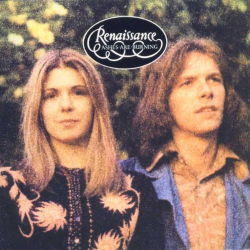
- Renaissance, Ashes are Burning — Lest you think I only listen to music composed before 1950, here is an example of one of my favorite albums from the classic rock world. Renaissance was a British “prog rock” band featuring virtuoso musicianship, a keyboard-driven sound, and the soaring soprano of vocalist Annie Haslam. Many of their songs featured lyrics by poet Betty Thatcher, whose work had its own kind of ethereal, mystical quality. The band released a number of albums worth owning, but I think their apotheosis remains 1972’s Ashes Are Burning, featuring the closest thing they ever had to a hit single, “Carpet of the Sun,” and the title track, an 11-minute meditation on love and impermanence. Although my single favorite song by Renaissance is “Bound for Infinity” from their 1971 album Prologue, overall Ashes Are Burning is their most satisfying musical statement.
- Various Artists, Lovely in the Dances: the Songs of Sydney Carter — I first encountered Sydney Carter as a youth in a Lutheran Church in the 1970s, where we would sing “Lord of the Dance” in between “Kum Ba Yah” and “They’ll Know We Are Christians By Our Love.” I confess that as an adolescent I thought “Lord of the Dance” was kind of goofy, rendering Jesus as a cross between Fred Astaire and John Travolta. But when I realized that a dancing god made more sense than a condemning god, the song suddenly made sense. Then one day while I was in graduate school my public radio station played the “Julian of Norwich” track from this album, which I immediately fell in love with; it took me some time to track down the recording, but when I found out that the composer was the same fellow who penned “Lord of the Dance,” this CD became a must have. Thirty years and countless listens later, it still delights me. Other standout tracks include “George Fox” about the founder of the Quakers and “The First of My Lovers” which may be the best song I’ve ever heard about integrating nature-based and Christian spirituality.
- Van Morrison, Astral Weeks — Unlike most people, my introduction to Van Morrison was not through his classic hits like “Moondance” or “Gloria” (even though I eventually came to love such songs); rather, I read about him in Rolling Stone magazine — which said that Van Morrison wrote songs about Celtic mysticism, so on that recommendation alone I had to check him out. I began with his lovely 1979 masterpiece Into the Music (also well worth having), but that album is child’s play compared to this masterpiece from a decade earlier. Astral Weeks has a jazzy feel, but it’s still a rock album; it just defies easy categorization. Morrison’s singing is powerful, ecstatic, and otherworldly; his lyrics restlessly and aggressively find transcendent meaning in the most ordinary moments of life. This album is one of those recordings that the critics all seem to love even though it wasn’t a huge hit; a lot of times, those kinds of albums leave me wondering what the fuss is all about; but Astral Weeks is the real deal. Yes, it shimmers with Celtic mysticism, but not in any kind of mythological or religious sense — it’s just an album with bucketloads of heart and soul, and it will make you believe in heaven and ecstasy and love and hope. I hope somebody plays it for me on the day I die — right before they play me the Vaughan Williams G Minor Mass.
My Desert Island DVDs
Enjoy reading this blog?
Click here to become a patron.
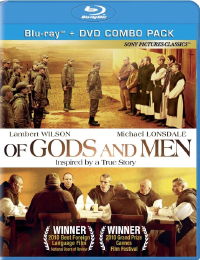
- Of Gods and Men (2010) — “Of Gods and Men is the greatest film I’ve ever seen on faith,” enthused Jesuit author James Martin — and I agree with him. This movie, based on a true story of French monks in Algeria who are eventually killed during the bloody civil war of the 1990s, does not settle for pious clichés or glib assurances of hope; rather, it’s an honest and many-layered exploration of faith in the midst of doubt, of how community works even though it’s imperfect, of how people of different faiths can love one another even in a world that too often settles for violence. It’s a beautiful film, rich and authentic in its portrayal of monastic life, yet with a message that applies to everyone.
- Vision: From the Life of Hildegard von Bingen (2009) — Hildegard of Bingen was an amazing figure, a renaissance woman three centuries before the renaissance. A Benedictine abbess, she was a mystic/seer, a writer, composer, artist, prophetess, and herbalist. This movie documents the first half of her long life, from a girlhood spent in the cloister as an oblate, to the onset of her visions, acceptance by the church hierarchy, and eventual renown she enjoyed as a holy woman. Her music and efforts to consolidate her authority as a church leader feature in this sympathetic biopic.
- Into Great Silence (2005) — Profoundly contemplative and deeply reflective, this simply produced film chronicles six months in the life of a French Carthusian monastery, chronicling the simplicity of life, austerity of beauty, and rootedness in the earth and the rhythms of nature, that characterize the cloistered life. Try to watch it without pausing the DVD — by the last half hour of the film, you might find yourself in a richly meditative state.
- The Chronicles of Narnia: The Lion, the Witch and the Wardrobe (2005) — Most film adaptations of C. S. Lewis’s Narnia stories (including this film’s sequels) are mediocre at best; but the 2005 film pretty much hits all the right notes. Wonderfully cast and featuring gorgeous cinematography, it’s a film that utilizes plenty of CGI magic but it always keeps the story front and center. And since it is mostly so faithful to source material, it works.
-
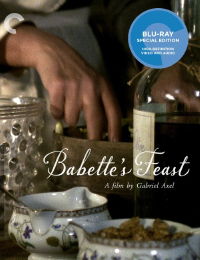
Babette’s Feast Babette’s Feast (1987) — Based on a story by Isak Dinesen, this deceptively simple story tells of two aging sisters who live a religiously austere life in a remote Danish village — and how their lives are changed forever when Babette, a refugee from political unrest in France, arrives at their village and is taken in as the sisters’ cook. When Babette wins a huge prize in the lottery, she prepares a feast for the village that no one will ever forget. Rich in both Eucharistic symbolism and themes of sacrifice and community, Babette’s Feast rewards multiple viewings.
- Chariots of Fire (1981) — “I believe God made me for a purpose, but he also made me fast. And when I run I feel His pleasure.” The real Eric Liddell may not have said that, but the Eric Liddell in this movie does, and what a great line it is. Forget the dated soundtrack (which really isn’t that bad), this is a lovely movie about faith, prejudice, and the triumph of old-fashioned values like discipline and perseverance.
- Brother Sun, Sister Moon (1972) — okay, after forty years this film seems dated and appears to be saying Saint Francis of Assisi was the world’s first hippie (and Saint Clare was #2). The sugary soundtrack by sixties troubadour Donovan doesn’t help matters. If we can overlook this kind of cinematic anachronism, this is a lovely, charming film that celebrates the story of young Francis, recounts the origin of his order, culminating with the dramatic trip to Rome where he secured the approval of Pope Innocent III (played by Alec Guinness, five years before he became Obi-Wan Kenobi).
- It’s a Wonderful Life (1946) — Everyone thinks of this as a holiday film but aside from the fact that the story’s climax takes place on Christmas eve, it’s much more universal in its scope. It’s a Wonderful Life has been called the most inspirational film ever made, and it’s easy to see why: as an eloquent argument against suicide (or despair), it celebrates not only the power that any one person has to make a difference, but it also emphasizes that in our darkest hour hope can come from the most unexpected of places (even from a bumbling “angel second class” called Clarence). It’s also a realistic, or perhaps even dark, film: the bad guy gets away with his mischief! But the good guy wins out anyway, and that’s cause for hope.
Enjoy reading this blog?
Click here to become a patron.





